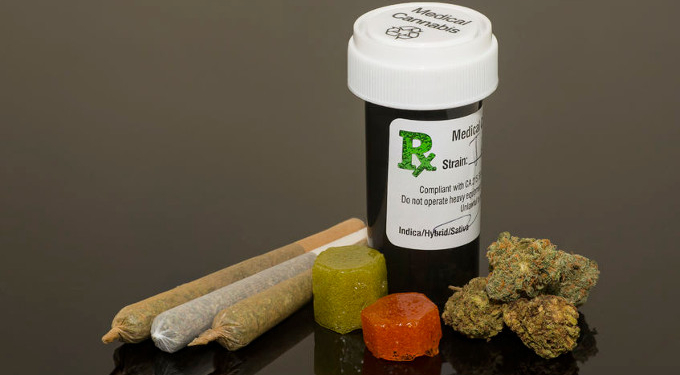
There are currently more than 230,000 registered medical marijuana users in Canada and over 2,500,000 in the US. But are all these people familiar with how cannabis actually works and how to choose their own medicine?
With the growing rate of medical marijuana users in North America, it seems like there is nothing easier than getting a medical card, hitting a dispensary and buying as much weed as you can. There is a mountain of evidence that cannabis is likely to help with as much as 16 different conditions, but there is also a concern that using it effectively is a matter of expertise not many physicians can brag about.
The simple truth is that what makes medical cannabis “medical” is a combination of two things: its cannabinoid and terpene profile.
Cannabinoids from cannabis supplement cannabinoids our body makes
If we were to take a magnifying glass and closely examine the flowers of plants belonging to the cannabis genus, we would see tiny, transparent structures on top of them, that sort of look like mushrooms. These are called “trichomes”.
The most abundant compounds in trichomes are cannabinoids, chemicals that the cannabis plant makes in order to protect itself from predators and protect its DNA from UV rays, thus preserving the species over multiple millennia.
When we (humans) ingest these compounds, either by eating cannabis products or by smoking flowers, these substances travel through our body and attach themselves to certain cellular receptors.
These receptors are a part of the mammalian endocannabinoid system, in charge of regulating hundreds of physical and physiological processes. To put it simply, cannabinoids from cannabis overload these receptors and make them communicate to certain parts of the body in charge of stuff like alertness, the release of dopamine, serotonin and endorphin, the immune system response and motor control.
THC, as the most common cannabinoid of them all, attaches itself mainly to a group of receptors located in our nervous system cells, thus producing effects like euphoria, happiness, head buzz, pain relief and many more.
So when we are trying to assess the health effects one strain might produce, we must first take into account its cannabinoid contents. More THC means the more potent the strain and the stronger the “high”, equal amounts of THC and CBD means a more therapeutic effect and more CBD than THC means low-to-no “high” at all with anti-inflammatory effects.
Terpenes help cannabinoids enter our system and influence their effects
Besides the unique cannabinoid content, every cannabis strain has a unique terpene profile, which is also what makes it beneficial in medicine.
The term “terpene” was coined from the word turpentine since these compounds are major components of resin and turpentine as well. As a huge class of organic compounds, terpenes are produced by most plants out there, providing the signature perfume smell of plants.
That smell has a very important role in a plant’s life. It attracts pollinators, deters parasites and predators, and aids in protecting the plant from UV rays. Also, terpenes are a prevention from bacteria and fungus, which can be harmful to the plant.
Besides being in charge of the well known pungent smell of the cannabis plant, these substances interact with cannabinoids, in a process called the entourage effect. When this happens, terpenes basically “team up” with cannabinoids that bind to our endocannabinoid receptors, helping them achieve their maximum effects and reducing any unwanted side-effects.
More than 120 different terpenes have been found in cannabis. Some are unique only to marijuana, while others can be found in other herbs, fruits and, vegetables.
The interactive infographic below will help you explore some of the most common terpenes found in cannabis. To get started, just click on the graphic.
As you can see from this detailed graphic, terpenes contribute greatly to the health benefits of cannabis and are present in many other plants.
Myrcene, as the most abundant terpene in cannabis, is famous for producing sedation and is commonly found in many indica strains. The aroma of this terpene has musky and earthy tones and is packed full of medical effects. Hence, if you suffer from chronic pain or any kind of inflammation you should stick to strains with a lot of myrcene.
OG Kush and Super Lemon Haze have a citrusy aroma because of a terpene called limonene, while Amnesia Haze and OG Shark smell like lavender and mint, largely thanks to linalool.
Limonene is known to improve the mood and relieves users from stress, as well for its antibacterial powers.
In case you’d like to lose some weight, strains rich in humulene (like Girl Scout Cookies) should be perfect for you since humulene suppresses appetite. Camphene has great potential in preventing cardiovascular diseases since it helps keep the cholesterol levels in check.
Caryophyllene behaves almost as a cannabinoid, being the only terpene that binds to cannabinoid receptors. Recent studies found that caryophyllene also helps treat alcohol withdrawal symptoms.
These organic hydrocarbons have been stealing the attention of scientific researchers in the past few years. Although the scientists have just started exploring terpenes, their findings are surprising and promising. Recent studies have shown that linalool stops seizures in mice, while borneol seems to have the ability to kill cancer cells. Besides their therapeutic benefits, terpenes are extensively used in various industries, like cosmetics, food, and healthcare.
So, when it comes to choosing the right cannabis strain, it is essential to take into account its THC to CBD ratio as well as its terpene profile. Knowing these two compounds in detail will most likely help you find relief with medical cannabis and bring your system back in balance.
About the Author
![]()
In charge of Greencamp’s health section, with a decade-long experience of using cannabis for stress relief. Her spare time is mostly divided between Irish dance and reading.
















